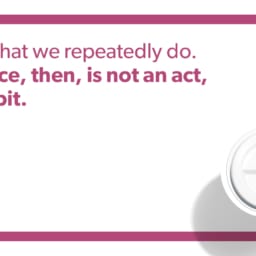When we think of feedback as something to be feared, we’re missing the point. Constructive feedback is a gift. It’s an opportunity to improve as a professional and as a well-rounded individual. It’s only a problem when we approach it that way. Yet, more often than not, feedback is something we dread. The real problem is the way we give and receive it. Whichever end you are on, it’s a delicate situation. We dread feedback because it is so commonly mishandled.
When handled properly, it is a valuable tool for individuals, teams and organizations to improve! Here are some tips for giving and receiving feedback that is not only constructive, but empowering.
Tips for Giving Constructive Feedback
1. Make sure you are coming from the right place
Before you go rushing to give someone feedback, take a moment to reflect on what your internal motivators are. If you’re looking to defend or excuse your own behaviour, or if you want to appease a third party, then chances are the feedback is not constructive. If you are genuinely concerned or want to help a team member succeed, then you are coming from the right place.
2. Lead and close with positivity
Cosmetics maven Mary Kay Ash said, “Sandwich every bit of criticism between two heavy layers of praise.” This quote birthed the “criticism sandwich” strategy, a method that involves starting a conversation with a piece of praise, addressing the problem, and then finishing off with more praise. Basically, the more positivity you can inject into a situation, the more open the recipient will be.
3. Focus on behaviour rather than the person
Always keep the conversation situational and steer clear of any personal criticism. By addressing the situation rather than the person, you can avoid making the recipient feel like your feedback is a personal attack. Focusing on behaviours and actions separates the problematic situation from the person’s identity and will prevent that person from getting defensive.
Tips for Receiving Constructive Feedback
1. Proactively seek feedback and own it
Don’t wait until someone gives you feedback, ask for it! Own it. Make constructive feedback a habitual tool for improving your work. If you never ask for feedback, then you’re guaranteed to get it. It’s a bit of a catch 22. On the other hand, if you invite feedback from people you trust, then you’ll better understand the challenges you face, and you’ll be able to proactively improve as a professional.
2. Take responsibility and cultivate a growth mindset
Taking credit for successes is much easier than taking responsibility for failures. It’s difficult to accept our own imperfections. However, if you’re able to recognize and accept your shortcomings, then you can address them. On the other hand, if you can’t recognize your flaws, then you’ll be stuck with them forever. So, embrace your failures! Learn from them and grow.
3. Ask for clarification and give yourself time to reflect
In order to make feedback a constructive process, you have to truly understand it. Ask questions and zero in on the underlying problem. Often, when we are receiving feedback, we are tempted to speed ahead to a conclusion. Instead, listen carefully to what a person is saying. Finally, take time to reflect before responding. “Let me think about this,” is a valid and mature response.
Practice these simple tips to make the feedback process more constructive for everybody involved. Remember, feedback should never be a source of fear. On the contrary, constructive feedback is a valuable tool for growth.
If you’re looking for a rewarding career in an environment where growth is encouraged, we’d like to hear from you! Explore our open opportunities here.















